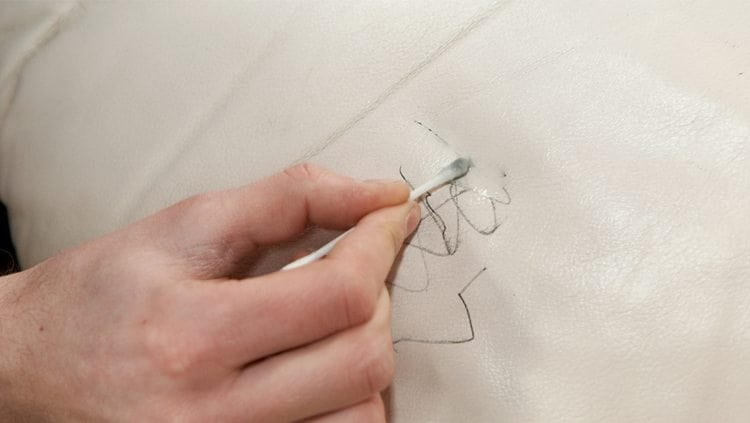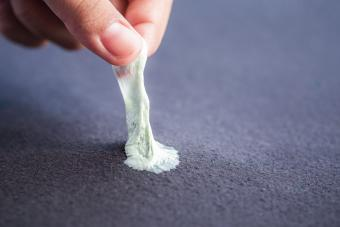Cleaning a leather couch is an essential task that ensures it remains in good condition and lasts for years. You can consider hiring a professional cleaning service for your house. They can save you time and effort, provide a deep and thorough cleaning, and ensure a healthier and more hygienic living environment for you and your family.
This article outlines some practical tips and tricks to help you have clean leather furniture. From regular dusting to removing stains and spills, we’ve covered everything you need to know. We’ve also provided leather couch cleaning tips to prevent furniture damage. Following these simple steps, you can keep your leather couch looking new and extend its lifespan. So, read on and learn how to clean a leather couch effectively.
Leather couches are a great addition to any home. They are stylish, comfortable, and durable. However, just like any other furniture, they require proper care and maintenance to keep them looking their best. Regular cleaning not only helps to maintain the appearance of your leather couch but also extends its lifespan.
If you’re wondering how to clean a leather couch, don’t worry. This article will cover the steps to help you keep your leather couch in tip-top shape. From removing stains to preventing damage, we’ve got you covered. So, let’s get started and learn how to clean a leather couch like a pro!
What You’ll Need
- Vacuum cleaner
- Microfiber cloth
- Disposable electrostatic duster (optional)
- Warm water
- Mild soap
- Rubbing alcohol
- Cotton ball
- Paper towel
- Baking soda
- Ziploc bag
- Ice cubes
- Leather conditioner
- Cocoa butter
- Beeswax
- Almond oil
- Baby oil (optional)
Instructions
1. Remove dust and dirt
Cleaning and shining up your leather sofa with weekly dusting will help. Use a vacuum cleaner with a brush attachment on leather upholstery to remove the extra dust, pet hair, and dirt.
The crevice tool on most vacuums is useful to reach spaces between and under cushions. A microfiber cloth or a disposable electrostatic duster are other options.
2. Get rid of grime
The worst stains can be removed from a leather couch with a delicate touch and mild cleaning solutions. Even though many excellent commercial leather cleaners are available, you only need some warm water, mild soap, and a microfiber cloth.
In a small bowl or bucket, combine warm water and a few drops of mild liquid soap to make a cleaning solution. If you’re using one, dampen the microfiber cloth and brush it over the soap bar.
Begin at the highest point of the leather sofa and work your way down, wiping each section of the surface as you go. Though it shouldn’t be dripping, your clean cloth should be thoroughly moist. Use moderate circular strokes to trap all the soil in areas with heavy soil, such as the arms of sofas. While you work, frequently rinse and wring out the soft cloth.
3. Polish the surface
You don’t need to rinse the leather furniture after you’ve removed the dirt. The leather material might be harmed and stained by too much water. Instead, polish the surface with a fresh, dry cloth.
4. Take on stubborn stains
Although stains on leather sofas occasionally occur, they can be easily removed with some cleaning products and prompt, careful attention.
How to clean Typical Stains
Most stains, such as ice cream or coffee spills, can be removed with dish soap. Wipe the affected area using a damp cloth dipped in warm, soapy water.
Scrub the stain in small circles as you remove it. Avoid rubbing the damp washcloth in a line because doing, so increases wear and tear. Wipe down the area in a circular motion, careful not to use too much water, and then dry it with a clean towel.
How to remove ink stains
Fresh ink stains should be removed using a paper towel, being cautious not to spread the ink any further. Work in small circular motions over a bar of mild soap with a damp microfiber cloth to remove the ink stain from the leather. As the ink is absorbed, shift to a portion of the clean wet cloth.
You can also use rubbing alcohol to remove ink stains from leather furniture. Apply a little amount of rubbing alcohol on a cotton ball or cotton swab, then dab the area around the ink stain. You should see the ink transferring to the sponge as you go. After that, dry the leather with a dry cloth or a paper towel.
How to clean grease stains
Clean any visible debris from the area and use a paper towel to gently dab the grease stain to absorb as much oil and grease as possible. To remove the oil from the leather, sprinkle baking soda on the area and leave it there for a few hours or overnight. Once the baking soda has been vacuumed away, repeat as necessary to remove the stain.
How to remove wax or gum
Stay calm if wax, gum, or anything else sticky spills on your leather furniture. Rather than blotting or wiping it out, the technique is to solidify the item before removing it.
In a Ziploc bag, put several ice cubes, and press them on the affected area. Before removing the wax or gum, give it time to solidify. Once it has hardened, you can remove the particles using a spoon or fingernail.
Never use a knife or anything else with a sharp edge, as this could cause the leather furniture to be torn or even scratched. You can monitor your progress.
If it’s not working, take it slower and reevaluate. If in doubt, consult the manufacturer’s instructions or, if feasible, contact. the manufacturer. Certain blemishes, especially those that cause scratches or noticeable stains on the leather, might need professional help.
5. Condition the leather furniture
Use a quality commercial leather conditioner to revive the softness of the leather on your leather sofa if it has lost its shine and looks tight and dry. See the manufacturer’s recommendations to determine the best conditioners for your sofa’s leather type. To revive the finish, polish the leather according to the product’s instructions.
6. Polish with a homemade leather conditioner
You can make your homemade leather conditioner to avoid buying pricy products and harsh chemicals. You can combine one part cocoa butter, one part beeswax, and two and a half parts almond oil.
Beeswax takes some time, but it’s effective on leather furniture. Just combine all ingredients and heat them until the oils are melted. Once it has cooled, use your fingers to rub it into the leather gently.
To prevent cracks and guarantee the longevity of your leather material, you may also apply mild oil, such as olive or baby oil.
Clean Your Leather Sofa to Keep It Longer
Keeping your leather couch clean is essential to maintaining its beauty and longevity.
Proper cleaning techniques and products allow you to easily remove stains, dirt, and grime while protecting the leather from damage.
Remember to clean your leather furniture regularly. Following these steps, you can enjoy your beautiful leather couch for many years. So, don’t wait any longer and start cleaning your leather furniture today!
And for a clean and inviting living room, please look at our ultimate guide on cleaning and maintaining your living area effectively.
FAQs
How often should you clean a leather couch?
A weekly dusting and a deep cleaning once a month are required to keep a leather sofa in top condition. Naturally, mud, ink, or grease spills and stains must be treated immediately and cleaned up.
Your leather couch needs frequent conditioning and cleaning to keep its lovely texture. Depending on how frequently you wet-clean your furniture, most leather furniture should be conditioned every 6 to 12 months.
Can I use vinegar to clean my leather couch?
White vinegar can be used to clean leather furniture, but you should test the mixture first in an inconspicuous area. Vinegar can also remove ink from leather, but please be cautious.
Can I use dish soap to clean my leather couch?
A leather couch can be cleaned with dish soap. For leather furniture cleaning, always use mild dish soap. While working with leather, always clean gently and without rubbing.









